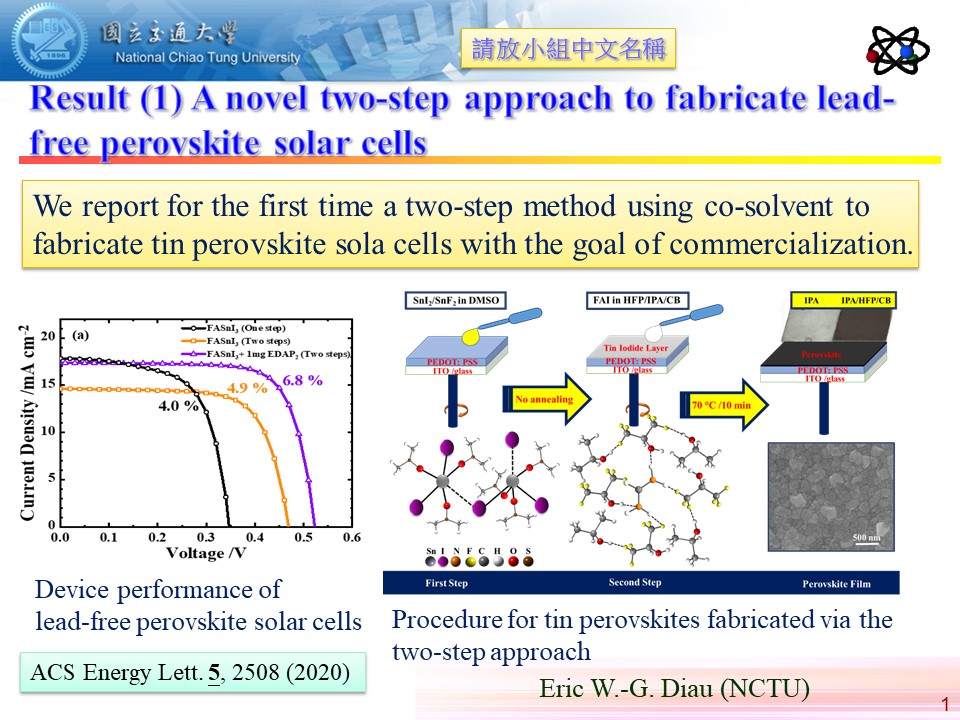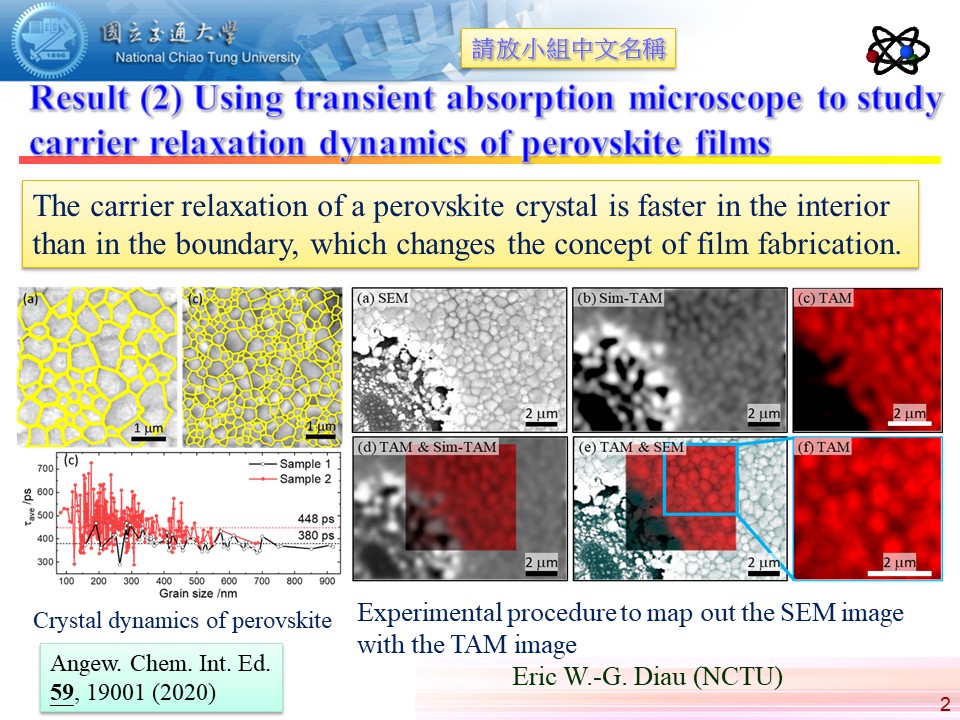

A novel two-step approach to fabricate lead-free perovskite solar cells

A pplying a two-step procedure and solvent engineering we fabricated a stable tin-based perovskite, formamidinium-tin-triiodide (FASnI3) solar cell for lead-free photovoltaic applications. The first step was deposition of a SnI2 layer with solvent dimethyl sulfoxide (DMSO); the second step applied a cosolvent system containing hexafluoro-2-propanol (HFP), isopropyl alcohol (IPA) and chlorobenzene (CB) in ratio 5:5:2 to deposit the FAI layer on the SnI2 layer. The traditional IPA solvent prevented the formation of a stable FASnI3 layer such that a stable device could not be fabricated. HFP was hence used to form hydrogen bonding with IPA and FAI to retard the crystal growth of FASnI3; CB served as anti-solvent. Ethylenediammonium dihypophosphite (EDAP2) in the first step was an effective reducing agent to increase the efficiency of power conversion from ~5 % to ~7 % with great reproducibility and stability over 4000 h. For the first time a stable FASnI3 solar cell has been produced via a two-step deposition, which may provide us more flexibility to control the film quality and crystal structure, via varying halides and co-additives in the first step and co-cations and bulky organic cations in the second step, for further development of tin-based perovskite solar cells with enhanced device performance and stability.
Saeed Shahbazi, Meng-Yu Li, Amir Fathi and Eric Wei-Guang Diau*, “Realizing a Cosolvent System for Stable Tin-Based Perovskite Solar Cells Using a Two-Step Deposition Approach”, ACS Energy Lett. 5, 2508 (2020).
Using transient absorption microscope to study carrier relaxation dynamics of perovskite films

We developed a direct mapping approach to overlay the image of a polycrystalline perovskite film obtained from the transient absorption microscope (TAM) with that from the scanning electron microscope (SEM). By mapping these imaging data pixel by pixel, we are able to observe the relaxation dynamics of the photo-generated charge carriers on varied regions of the film. The carrier relaxation dynamics contain a dominated single-exponential decay component due to the recombination of charge carriers. We found that the lifetime distribution of charge recombination shows a bimodal feature, for which the rapid and slow distributions are assigned as free and trapped carriers, respectively. The charge recombination was slower in the grain boundary (GB) region than in the grain interior (GI) region. The small grains have longer lifetimes than the large grains for the crystal size smaller than 500 nm. Our results thus indicate that GB with retarded charge recombination might play a positive role in a perovskite solar cell. We may conclude that the surface trap states in the grain boundaries with retarded charge recombination (longer lifetimes) might play a role for efficient charge extraction to the contact layer.
Amir Fathi, Efat Jokar, Yuan-Pern Lee and Eric Wei-Guang Diau*, “A Direct Mapping Approach to Understand Carrier Relaxation Dynamics in Varied Regions of a Polycrystalline Perovskite Film”, Angew. Chem. Int. Ed. 59, 19001 (2020).